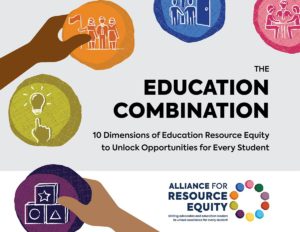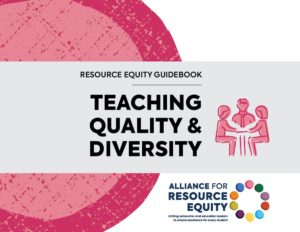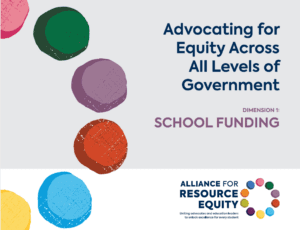- Home
- Dimensions of Equity
- Diverse Classrooms & Schools
The Vision
Each student is enrolled in classes that are racially/ethnically and socioeconomically diverse, so all students can reach high standards and thrive.
Sample Questions to Ask
- What is the racial/ethnic and socioeconomic composition of our district’s enrolled students?
- How does the racial/ethnic and socioeconomic composition of school level student enrollment compare to our district overall?
- What is the racial and socioeconomic composition of classrooms, compared to the composition of their school?
See our DIY District Diagnostic for more examples and recommendations about the types of data to look at.
Take Action With Our Diagnostic Tools
- Use our Resource Equity Diagnostic: Self-Assessment tool to start conversations and build shared understanding across teams.
- Then, analyze your data to better understand the state of resource equity in your district. First, use our Diagnostic Blueprints to learn about what types of analyses to conduct. Then, input your district data into our DIY Analysis Tools to complete these analyses and make meaning of the results.
- Prioritize areas for further inquiry and identify potential root causes and actions using our District Guidebook.
Common Causes of Inequity
- Biased District Policies: When school assignment, zoning, choice, or transportation policies reinforce residential segregation, it can limit the opportunity for students to go to school with a diverse group of peers.
- Limited Access to Advanced Courses: If schools have insufficient or biased systems for enrolling students in advanced coursework, it can lead to students of color and students from low-income backgrounds being tracked into lower-level courses.
- Ineffective Scheduling Practices: School scheduling timelines and processes can limit students’ enrollment in appropriate course offerings with a diverse group of peers.
Related Dimensions
No single dimension of education resource equity can unlock every student’s potential—but when dimensions are combined to meet students’ distinct needs, they are a strong foundation for unlocking better, more equitable experiences in school.
Explore the Positive & Inviting School Climate dimension, since students need to feel safe and free from discrimination, harassment, bullying, or physical harm, especially when learning with peers from different backgrounds.
Toolkit
Use our Resource Equity Toolkit to learn more, start a conversation, and take action in your community.

The Education Combination
Learn about education resource equity by discovering 10 dimensions that unlock better, more equitable experiences in school for all students.

Diagnostic Tools And Supports
Identify strengths and gaps in your school system across all 10 dimensions.

Guidebooks
Explore underlying causes of your school system’s challenges and possible actions to improve students’ experiences in school.

Advocating Across Government
Identify who has the power to address equity gaps in your school system and the school district, state and federal levels.

Casemaking Decks
Develop compelling and coherent messaging to “make the case” for addressing resource inequities in your community.
